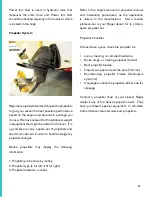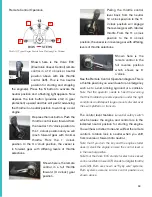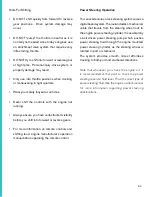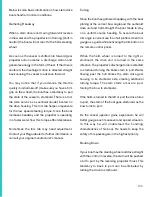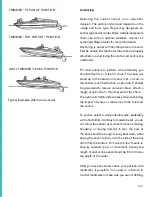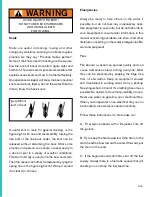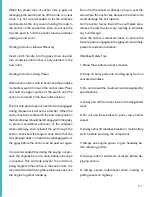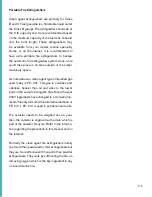
98
Spring Lines
Most small boats use two spring lines although it is
possible to have four. They are called the after bow
spring and forward quarter spring.
Bow springs are secured at the vessels bow area.
Forward spring lines lead forward from the boat to
the dock and control movement toward the stern.
After springs stem aft from the vessel, and stop
movement ahead. Spring lines are used to prevent
movement in a berth, ahead or astern. They are really
useful in controlling the effects of a real active tidal
surge. Spring lines are useful where fenders need
to be kept in place against piles.
Boat Mooring
Most boats can be secured to a dock using four
lines. The after bow spring is crossed with the
forward quarter spring and secured to individual
dock cleats or pilings. This ensures longer springs
and can be snugged up tighter for more efficient
tidal control.
1. Bow line
2. After bow spring
3 Forward quarter spring
4. Stern line
1.
2.
3.
4.
TYPICAL PIER MOORING
=FENDER
TYPICAL PILING MOORING
Remember, if you only have one piling available,
position the vessel so this point is opposite
amidships. Run both spring lines to it. These lines
will be shorter but still useful. The bow and stern
lines should be relatively at a 45 degree angle with
the dock. The stern line can be attached to the near-
shore quarter cleat, but will work more efficiently to
the offshore quarter cleat. The longer line will allow
the boat flow with the tide with less time checking
the vessel.
Dock Line Sizing
Most dock lines today are made of nylon, either of
twisted rope or braided core and cover. The most
often used material is nylon because of its stretching
abilities absorbing shock loads. It is chafe resistant
for extended life and is easier on bare hands.
The line’s size varies with the vessel. Normally,
a vessel in the 20’ to 40’ boats will use 1/2”
diameter nylon lines. Larger yachts use 5/8” and
3/4” diameter nylon lines. Smaller boats can use
3/8” nylon lines.
Dock lines need to have the strength to hold the
vessel and have enough density to resist chafing.
They shouldn’t be too heavy that they lose their
shock-absorbing capabilities. Use the right size line
for the vessel since a line to large for the boat will
pull hard against the vessel since it won’t be forced
to stretch. If the line is too small for the vessel, there
is no margin for wear and chafe when under strain.
Securing Dock Lines
When mooring your boat, make sure the dock
lines are secured at both ends. Depending on your
situation you may need to loop the eye splice of the
dock line around a piling.
Summary of Contents for LS4C
Page 1: ...REGAL LS4C OWNER S MANUAL OCTOBER 2018 EDITION...
Page 29: ...29 Navigation Light Rules...
Page 43: ...43 Navigation Rules...
Page 46: ...46 Lateral Aids...
Page 47: ...47 Channel Markers Regulatory Markers...
Page 49: ...49...
Page 50: ...50...
Page 78: ...78...
Page 123: ...123 INSTALLING TRAVEL STORAGE COVER Travel Storage Cover Typical Continued...
Page 194: ...194...
Page 195: ...195...
Page 196: ...196...
Page 197: ...197...
Page 198: ...198...
Page 200: ...200 PROPRIETARY RIGHTS HH1 HH2 HH3 HH4 HH 5 HH2 HH3 HH5 HH4...
Page 201: ...201...
Page 202: ...202...
Page 203: ...203...
Page 204: ...204...
Page 205: ...205...
Page 206: ...206...
Page 207: ...207...
Page 208: ...208...
Page 209: ...209...
Page 210: ...210...




